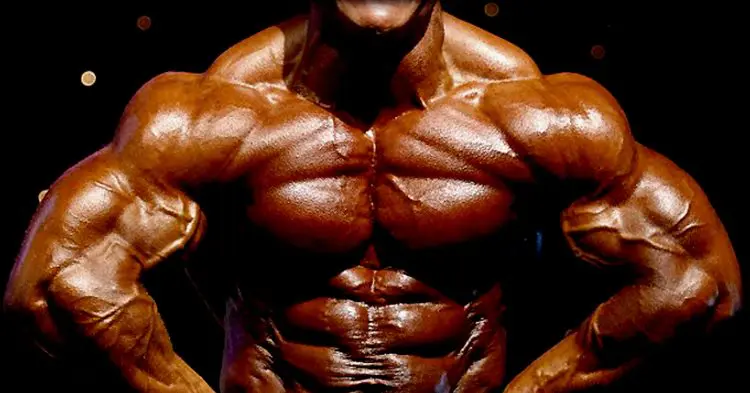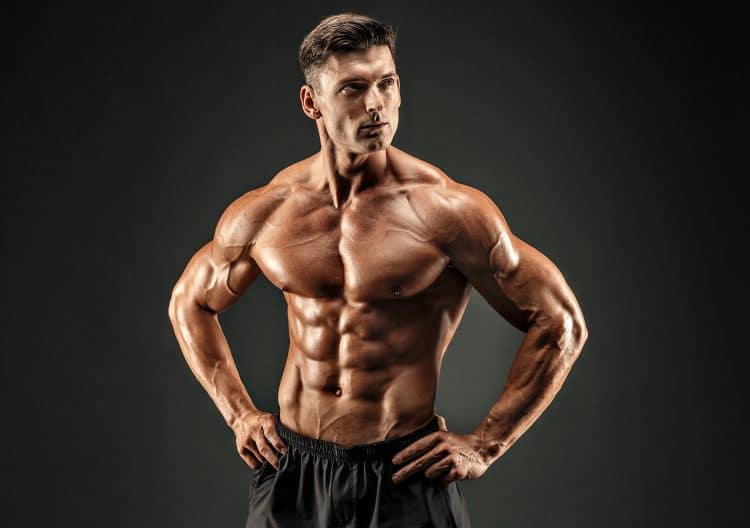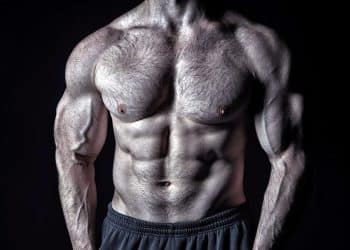Given how many exercisers want a big, muscular chest, you’d think they’d be more imaginative with their pec training. Instead, many lifters train pecs on Monday (World Chest Day!) with the same old sets and reps of bench presses and cable crossovers.
This lackluster approach to chest training often leads to frustration and stalled progress. As fitness professionals emphasize, continuing the same workout routine yields identical results. To stimulate muscle growth, you must introduce variation and challenge your muscles in new ways.
This article presents a 6-8 week program designed to revitalize your chest training and spark new growth.
The Pectoral Split – Workout Overview

Instead of training your chest once a week, this program employs a dual-workout strategy, targeting your pecs twice every seven days with distinct approaches:
1. A heavy, powerbuilding-style workout focusing on mechanical tension and strength gains.
2. A high-volume, metabolic stress workout designed to maximize muscle pump and lactic acid production.
Level Up Your Fitness: Join our 💪 strong community in Fitness Volt Newsletter. Get daily inspiration, expert-backed workouts, nutrition tips, the latest in strength sports, and the support you need to reach your goals. Subscribe for free!
This combination of training methodologies promotes rapid pectoral development by engaging different muscle fibers and growth pathways. Try these powerbuilding workouts for size and strength.
Here’s how your training week could look with our two chest workouts included:
| Monday | Tuesday | Wednesday | Thursday | Friday | Saturday | Sunday |
| Chest 1 | Back | Legs | Chest 2 | Rest | Delts & Arms | Rest |
This program is tailored for intermediate to advanced lifters seeking to intensify their chest training regimen.
Pectoral Split Workout #1
Perform this workout early in your training week to maximize energy levels. This approach aligns with the scientifically-supported Joe Weider Priority Training Principle.
Begin with a comprehensive warm-up:
1. 5-10 minutes of light cardiovascular activity
2. Dynamic mobility exercises for chest, shoulders, and triceps
3. 50-100 reps of light band pull-aparts to enhance shoulder stability
Hard and Heavy
| Exercise | Sets | Reps | Recovery | |
| 1 | Barbell paused bench press | 5 | 5 | 2-3 minutes |
| 2 | Incline bench press | 4 | 6 | 2 minutes |
| 3 | Decline dumbbell bench press | 3 | 8 | 90 seconds |
| 4 | Smith machine push-up ladder | 1 | AMRAP | N/A |
1. Barbell paused bench press
Paused bench presses increase mechanical tension and pec power while preventing momentum-driven repetitions. This variation demands more from your muscles, typically resulting in a lower weight used compared to standard bench presses.
How to do it:
- Lie on the bench with your eyes directly under the barbell. Plant your feet firmly on the floor, arch your lower back, and pull your shoulders down and back. Brace your abs.
- Grip the bar with an overhand, slightly wider than shoulder-width grip.
- Unrack the bar and hold it over your chest.
- Lower the bar smoothly to lightly touch your sternum.
- Pause for 2-3 seconds, maintaining tension.
- Drive the bar back up and repeat.
2. Incline bench press
Incline bench presses target the clavicular or upper part of your chest. While often performed with dumbbells, using a barbell allows for heavier weights. If you experience discomfort or shoulder pain, or if your gym lacks an incline bench press station, dumbbells are a suitable alternative.
Check out this guide to ensure proper incline bench press form.
3. Decline dumbbell bench press
Decline bench presses emphasize the lower pecs. Performing this exercise with dumbbells allows for a greater range of motion and tends to be more shoulder-friendly than the barbell version.
Learn how to properly execute decline dumbbell bench presses here.
4. Smith machine push-up ladder
This final exercise is designed to exhaust any remaining energy in your chest muscles, targeting fast-twitch type 2b muscle fibers.
How to do it:
- Set the Smith machine bar to its lowest position. Grip the bar slightly wider than shoulder-width. Assume a push-up position with feet back. Brace your core and perform repetitions to failure.
- Within 5-10 seconds, raise the bar one increment. Resume the push-up position and repeat to failure.
- Continue this process, gradually increasing bar height, until you’re nearly upright or unable to continue.
- The intense pump and burning sensation are normal indicators of effective muscle stimulation.
Pectoral Split Workout #2
This second chest workout focuses on metabolic stress and muscle pump. While using lighter weights, the combination of higher repetitions and shorter rest periods ensures a challenging and effective session. You’ll also incorporate training systems to further enhance workout intensity and muscle engagement.
Remember to perform a thorough warm-up, including the essential resistance band pull-aparts.
Pump and Burn
| Exercise |
Sets |
Reps |
Recovery |
|
| 1a | Incline dumbbell fly |
4 |
8-10 |
90 seconds |
| 1b | Incline dumbbell squeeze press | |||
| 2a | High to low cable crossover |
4 |
10-12 |
90 seconds |
| 2b | Dip | |||
| 3a | Pec deck |
4
Get Fitter, Faster
Level Up Your Fitness: Join our 💪 strong community in Fitness Volt Newsletter. Get daily inspiration, expert-backed workouts, nutrition tips, the latest in strength sports, and the support you need to reach your goals. Subscribe for free! |
12-15 |
90 seconds |
| 3b | Guillotine press |
Perform exercises 1a and 1b, 2a and 2b, and 3a and 3b as supersets. Complete the ‘a’ exercise, immediately followed by the ‘b’ exercise. Rest for the prescribed time, then repeat for a total of four supersets.
1a. Incline dumbbell fly
Dumbbell flys isolate the pectoral muscles, involving shoulder movement while maintaining slightly bent, rigid elbows. This exercise pre-exhausts your pecs, intensifying the subsequent dumbbell squeeze presses.
Our comprehensive guide details proper incline dumbbell fly technique.
1b. Incline dumbbell squeeze press
The dumbbell squeeze press, also known as the close grip dumbbell bench press, maximizes chest engagement by pressing the dumbbells together throughout the movement. Prioritize inward pressure over heavy weight for optimal results.
Learn proper dumbbell squeeze press form here.
2a. High to low cable crossover
High to low cable crossovers target the inner and lower pectoral muscles. Focus on squeezing your pecs at the movement’s midpoint and achieving a full stretch between repetitions. Prioritize proper form and muscle engagement over heavy weights.
Discover more about effective cable crossover technique here.
2b. Dip
Dips are highly effective for both chest and triceps development. Lean forward to emphasize chest engagement. If you can easily perform more than 10-12 repetitions, add weight with a vest or dip belt. Conversely, use a dip machine or resistance band for assistance if needed.
Learn how to optimize dips for chest development here.
3a. Pec deck
The pec deck machine allows for intense chest isolation. With back support and guided arm movement, focus on pushing your pecs to failure. Consider incorporating drop sets for additional intensity.
Explore proper pec deck machine technique here.
3b. Guillotine press
The guillotine press, or neck press, is a classic bodybuilding exercise that increases pec activation through an extended range of motion. Invented by Vince “The Iron Guru” Gironda, this challenging movement requires careful execution. Use moderate weights and consider having a spotter for safety.
Learn the correct guillotine press technique here.
The Pectoral Split – Tips for Better Results
Maximize your results with these evidence-based strategies:
1. Optimize deltoid training
Chest exercises inherently engage the anterior deltoids. Adjust your shoulder training accordingly, focusing more on medial and posterior deltoid work to maintain balance.
2. Implement progressive overload
Initially, at least, just starting a new workout will stimulate renewed muscle growth. However, as the novelty of a new workout starts to wear off, you’ll need to find ways to make your training more challenging. Do your utmost to lift a little more weight or do an extra rep or two whenever you repeat a workout.
These ongoing increases will ensure that your muscles continue to get bigger and stronger.
3. Prioritize nutrition
Support muscle recovery and growth with a protein-rich diet. Consider using a high-quality protein powder supplement to meet your daily protein requirements. Use our protein calculator to determine your specific needs.
4. Consider strategic supplementation
While you don’t have to use supplements to build muscle, there is no denying that they can be helpful. Products like creatine, BCAAs, pre-workouts, and ZMA can all enhance your progress by boosting your energy or speeding up recovery. Check out this guide to bulking supplements for more information.
5. Prioritize quality sleep
Your muscles do most of their growing when you are asleep. During the night, your body produces more growth hormone and testosterone, and rates of protein synthesis are highest. In short, if you don’t get the requisite 7-9 hours of sleep per night, you could end up undermining your progress.
Learn more about the crucial role of sleep in muscle building here.
Wrapping Up
Many exercisers mistakenly believe they’re pec “hard gainers,” attributing lackluster chest development solely to genetics. While genetic factors play a role, inadequate effort and suboptimal programming are more often the culprits behind unsatisfactory chest growth.
Rather than adhering to the conventional approach of three sets of ten bench presses every Monday, embrace a more targeted strategy. By hitting your pecs twice weekly with two distinct workouts, you’ll stimulate new growth and simultaneously build impressive strength.
This approach may seem unconventional to many lifters, and venturing into new territory can be daunting. However, if your current routine isn’t yielding the desired results, it’s time for a change.
The choice is yours: continue with familiar yet ineffective workouts and maintain the status quo, or embrace this scientifically-designed program to unlock your chest’s true potential.
Remember, meaningful progress often lies just outside your comfort zone. This pectoral split program offers a structured, evidence-based path to the impressive chest development you’ve been striving for. Give it an honest effort for 6-8 weeks, and let the results speak for themselves.
Your journey to a more muscular, powerful chest begins now. Are you ready to make the commitment and see real change? The barbells are waiting – it’s time to get to work!









